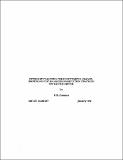Externality valuation versus systemwide analysis : identifying cost and emissions reduction strategies for electric service
Author(s)
Connors, Stephen R.
DownloadMIT-EL-92-001WP-28615727.pdf (1.532Mb)
Metadata
Show full item recordAbstract
In an effort to require electric utilities to assess the environmental impacts of
their activities, public utilities commissions nationwide have been turning to
the use of environmental externality valuation as a tool in integrated resource
planning. To date, policy discussions have focused predominantly upon the
correct value and calculation of externality adders, rather than their use and
applicability as a planning tool. This paper discusses the use and utility of
externality valuation for identifying low-cost, low-emissions electric service
strategies. Using data obtained from a broad based examination of New
England's electric service options, this paper compares the externality valuation
concepts with the information generally obtained from electric power system
simulation and production-costing analyses. While a valid economic concept,
the application of externality values is of little use in identifying which
strategies are both low-cost and low-emissions, or the specific policy options
required to ensure their implementation. Externality valuation should
therefore be used only as a last step, to select from among low-cost, low-
emissions strategies once the aggregate cost and emissions impacts of those
strategies have been identified.
Date issued
1992Publisher
MIT Energy Lab
Other identifiers
28615727
Series/Report no.
MIT-EL92-001WP